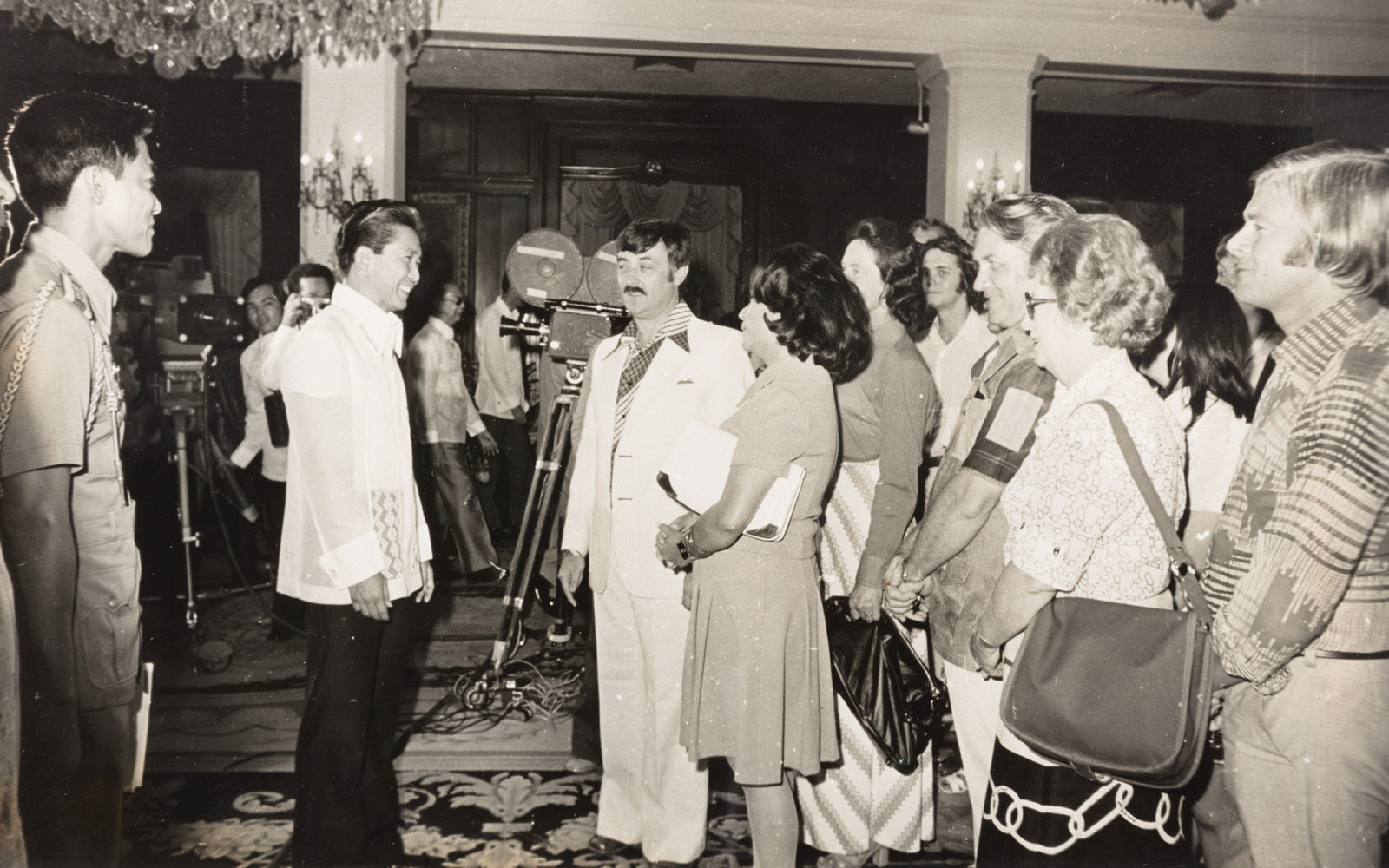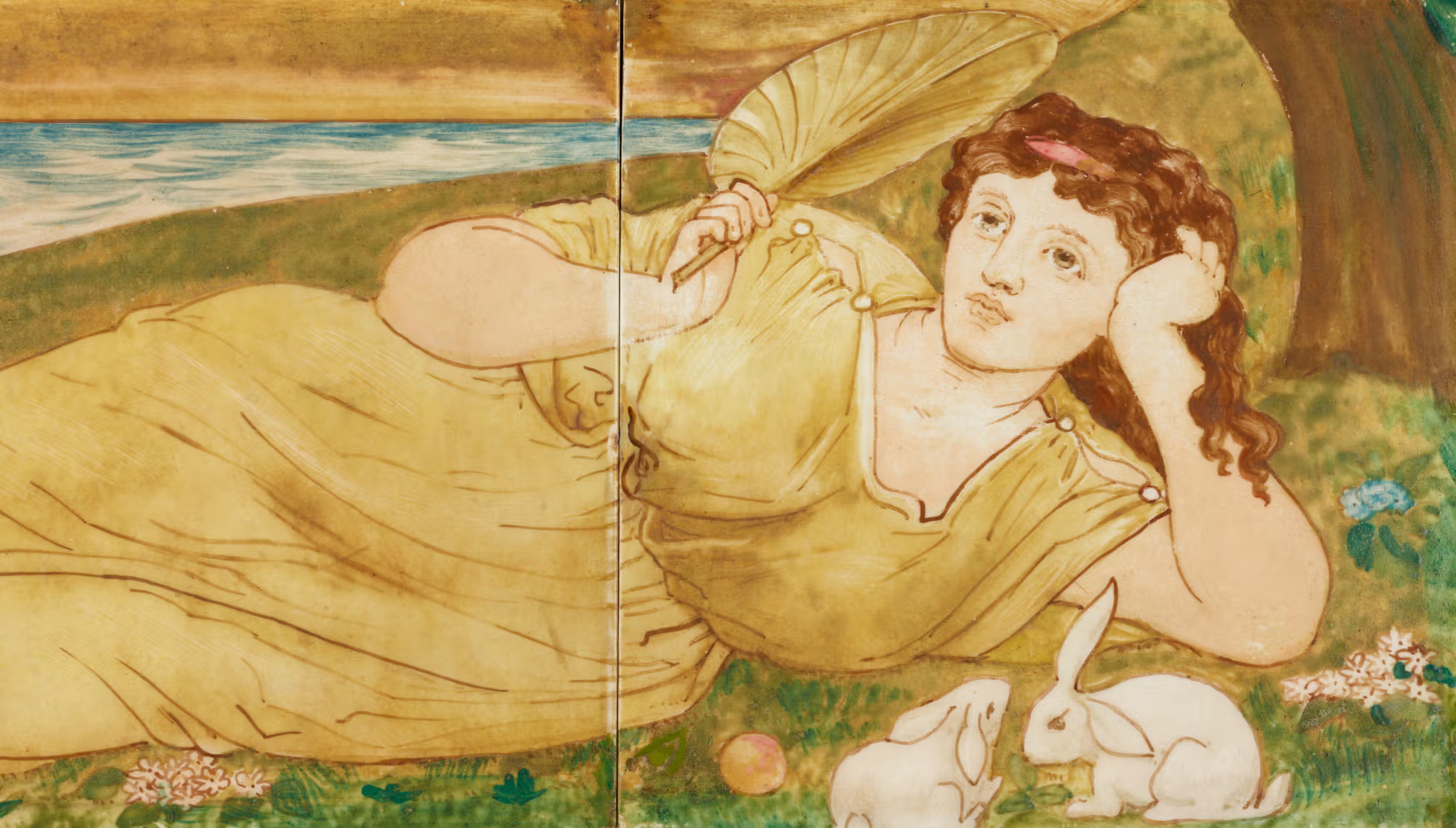City of Gods, my early experience and toy boat
Inspired by a watercolour of the ruins of the temple of Vishnu, refugee curator in residence Jagath Dheerasekara writes about Devinuvara as a site of pilgrimage, colonisation and uprising, and of his memories and experience.
Sitting in the Caroline Simpson Library with curator Michael Lech, I looked at a set of five watercolour drawings from the Wesleyan Mission in Ceylon (the former name of Sri Lanka, until 1972). The drawings were made by the Reverend Frederick James Jobson (1812–1881), who was a Wesleyan minister, painter and architect. Jobson recounts his journey to Dondra, the southernmost point of the island, in his 1862 book Australia: with notes by the way on Egypt, Ceylon, Bombay, and the Holy Land. He visited Ceylon for about a month in October and November 1860 on his way from England to Australia on a steamship. These drawings originated from this stopover. One of the drawings, Ruins of Temple of Vishnu, Dondra, brought back strong personal memories for me. The Sinhalese call the town Devinuvara (City of Gods), or more colloquially Devundara.
Devinuvara is around 6km from where I grew up in the town of Matara in Sri Lanka in the 1970s. As a child I went there almost every year with my mother in July or August, when the Esala festival is held to pay homage to the god Vishnu. I was excited by the many goings-on at the festival, except the experience of being blessed by the priest who circled peacock feathers around my face. My mother would present various offerings to Vishnu and other deities. She always had a lot of vows to fulfil.
A sacred place
Eminent 20th-century archaeologist Senarath Paranavitana ascertained that the god Upulvan (known as the one of blue lotus colour) was the benefactor god of this coastal tip up to the 15th century. Some scholars believe that Upulvan metamorphosed into Vishnu, the deity now revered as the benefactor god of Devinuvara. The arrival of many Brahmins in Sri Lanka, driven away from India by burgeoning Muslim power during medieval times, may have set this transformation in motion, according to Paranavitana. The description of Moroccan traveller Ibn Battuta’s visit to Devinuvara in 1344 in his book Al Rihla (The travels) perhaps informed Paranavitana’s hypothesis. Battuta’s account is colourful and details the Brahmin presence at the temple.
Devinuvara, or Dondra as Jobson knew it, had been a great centre of pilgrimage for more than 1,000 years according to an 8th-century stone inscription found at the precinct. It refers to a Buddhist monastic institution there. However, first mention of its name as ‘Devinuvara’ is found in King Nissanka Malla’s (1187–1196) stone inscriptions. Chronicles of the 13th and 14th centuries also reference Devinuvara for the royal patronage it received for building, rebuilding or renovating the shrines. The importance of Devinuvara as a sacred place related to Upulvan is reinforced by the 14th- and 15th-century Sinhala poems called Sandesha. The poems indicate that an Upulvan shrine, a Buddhist temple, and Ganesha and Siva (Shiva) shrines with a rest house for pilgrims were present at this sacred place.
Cosmopolitan and commercial
It’s not difficult to picture ancient Devinuvara as a cosmopolitan place where seafarers, traders and worshippers of different faiths crossed paths, and commerce and multi-religious activities occurred cohesively. Devinuvara emerged as an important commercial port during the 13th to 15th centuries. An inscription from the time of King Parakramabahu II (1236–1270) found in the temple precinct outlines the king’s regulations to prevent evasion of customs duties at the port. During his 1344 visit, Battuta observed that the town was inhabited by merchants. These accounts provide further evidence that Devinuvara was a commercial centre. An early-15th-century trilingual slab installed by Admiral Cheng Ho in honour of the Chinese Emperor Yung-lo, or Yongle, combines Chinese, Tamil and Persian inscriptions, and tells multiple stories incorporating a Buddhist temple, a deity and imperial gifts. It is said this trilingual slab demonstrates the Chinese emperor’s art of diplomacy for trade, his acceptance of the pluralistic character of the port city and the recognition of divine grace in shielding seafarers from tragedies.
It is unlikely that Jobson would have seen the resplendent temple that Battuta described. The temple complex had been desecrated by the Portuguese about three centuries prior to Jobson’s visit in 1860. In 1588 the Portuguese Captain Major of the Sea, Thomé de Sousa, sailed out of the Colombo harbour in ten vessels, with the expressed intention of ravaging the south coast. At Devinuvara, his final stop, thousands of idols in the temple precincts were broken to pieces, the storehouses of precious goods ransacked, and the great shrine razed. The City of Gods that had grown into a grand cultural and commercial centre over almost eight centuries had suffered a catastrophic blow. For the local populace, this would have been one of their early experiences of a European civilisation. The Portuguese went on to build a church on the ruins of the shrines they had destroyed.
King Rajasinha II of Kandy (1635–1687), who later ousted the Portuguese from the area, rebuilt the temple, dedicating it to Vishnu. The temple has continued to this day at Devinuvara, undergoing many renovations and restorations. A descendant of the clan who played a major role in the battle that drove the Portuguese out of the region told me that he regularly joins his people carrying a commemorative flag in the annual Esala procession. Although I attended many an Esala festival as a child, this part of Devinuvara history was unknown to me at that time.
Memories of Devinuvara
I have fond memories of a toy boat my mother bought me at one of these Esala festivals. It was powered by a small coconut oil burner and had a rudimentary steam engine with no moving parts. It made a putt-putt sound. I would sail it in a basin full of water and in a sea of my imaginations. My memories of Devinuvara as a young man, however, possess many ‘moving parts’. During the Sri Lankan uprising of 1987–89 in the south of the island, the university student movements played a dynamic role in the protests against the incumbent autocratic government. One afternoon in mid-1988, when I was at a meeting with a group of student activists at the University of Ruhuna, located walking distance from Devinuvara, the Sri Lanka Army launched a cordon and search operation. I managed to escape and got to Devinuvara, which was in the proximity of the notorious Eliyakanda torture chamber, a place where I would be incarcerated several months later. The southern province was riven by extreme political violence during the Sri Lankan government’s crackdown on the uprising. The European Parliament’s investigative mission in 1990 estimated that the insurrection claimed 60,000 lives. Devinuvara was in the thick of it.
Today, Devinuvara is a bustling town with a fishing harbour. Despite the destruction and neglect by three colonising European civilisations and the relentless urbanisation, many antiquities are still there to bear witness to the past splendours of the ancient City of Gods.
Author
Jagath Dheerasekara, former refugee curator in residence
The Refugee Curator Residency was a partnership between Museums of History NSW and Casula Powerhouse Arts Centre.
Published on
Related
![Vue de George’s Street a Sydney [Nouvelle Galles du Sud]](https://images.slm.com.au/fotoweb/embed/2022/12/94f113aa18994a80857dcefdfbbd9f7d.jpg)
A 'musical jolt' in early colonial Sydney
Imagine that moment when you first heard your favourite piece of music - something that excited, moved or surprised you. The early musical soundscape of Sydney was teeming with just such moments

A Little archive that tells a big story
Ahead of his time, interior designer Barry Little had a significant influence on Australian interiors in the 1960s and 70s

A global design story
Their original owner and use remain a mystery, but these striking tiles hold an intriguing connection to a significant international design story

A new phase of life for Marlborough Hall
Historical research informs contemporary design, helping to give this original art deco apartment block a new lease on life
